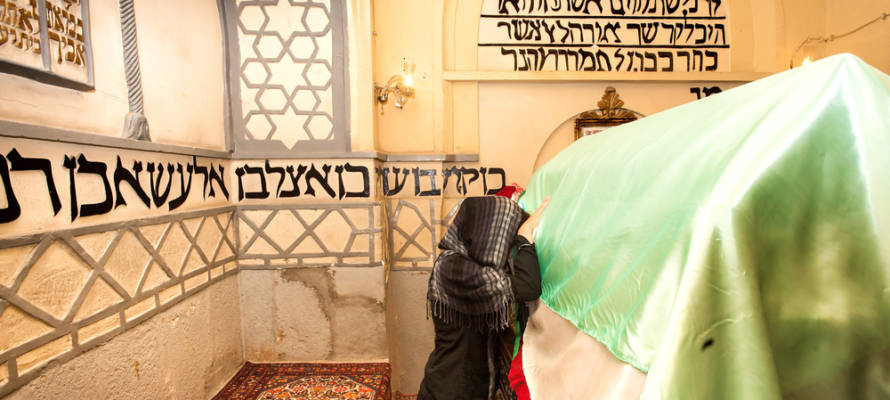In 2020, Iran threatened to raze the Tomb of Mordechai and Esther and turn the site into a Palestinian consulate.
By Pesach Benson, United With Israel
An exchange of historical letters on display at Israel’s National Library shows that Iran’s Jewish community purchased the tomb of Mordechai and Queen Esther from the Shah of Iran in 1971.
The letters are on display at Israel’s National Library in Jerusalem in honor of this week’s Purim holiday.
The holiday celebrates the salvation of the Jewish people as Mordechai and Esther foiled a plot by viceroy Haman to kill the Jewish people as described in the Book of Esther.
The two are believed to have been buried in Hamedan, a city in what is now northwestern Iran. The mausoleum currently on the site is believed to have been built in the 1600s.
There are no authoritative Jewish sources confirming Hamedan as the location of the tomb. But according to accounts from medieval times, after the death of Achashverosh (Xerxes I), supporters of Haman tried to kill Mordechai and Esther, who fled to Hamedan, where they lived out their lives.
The oldest account of the grave site in Hamedan is based on the account of Benjamin of Tudela, a Spanish Jew who traveled through Europe, Africa and Asia in the 12th century.
“And from that mountain until Hamedan, a journey of ten days, is the great city where around fifty thousand Jews live and where Mordechai and Esther are buried,” he wrote in “The Travels of Benjamin.”
According to Israel Hayom, the Iranian letters were kept in the archives of the ORT organization, which are kept in Jerusalem’s Central Archives for the History of the Jewish People. ORT operates an educational network in Israel for science and technology education.
The correspondence began in 1968 and culminated in the transfer of ownership in 1971.
Dr. Sam Tropp, curator of the National Library’s Islamic collection, told Israel Hayom that Iran’s last Shah, Mohammad Reza Pahlavi, saw himself as a successor to Cyrus the Great and was favorable to the Jewish community’s request.
Tropp explained that 1971 was exactly 2,500 years after Persian King Cyrus II issued what is often referred to as the first declaration of human rights in 539 BCE, and the Shah viewed the sale as a goodwill gesture in light of that anniversary.
The Iranian government declared the tomb a heritage site in 2008, but removed that designation in 2011 claiming the story of Purim commemorated the Jewish massacre of Iranians.
In 2020, the Iranian government threatened to raze the tomb and turn the site into a Palestinian consulate. Later that year, someone tried to set the tomb on fire on May 14, the anniversary of Israel’s founding.
Hamedan is one of Iran’s oldest cities. In the 1930s, roughly 8,000 Jews lived there. By the end of the 20th century, the number of Jews in Hamedan was reportedly 15.
